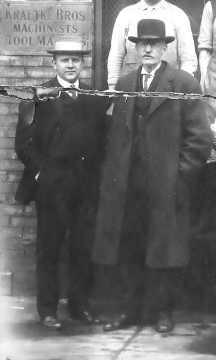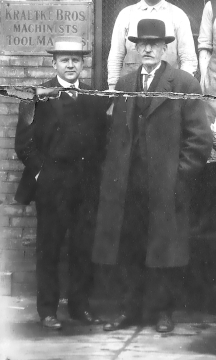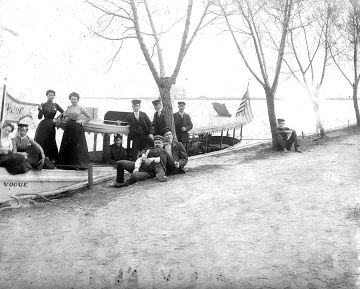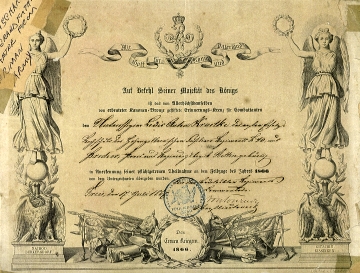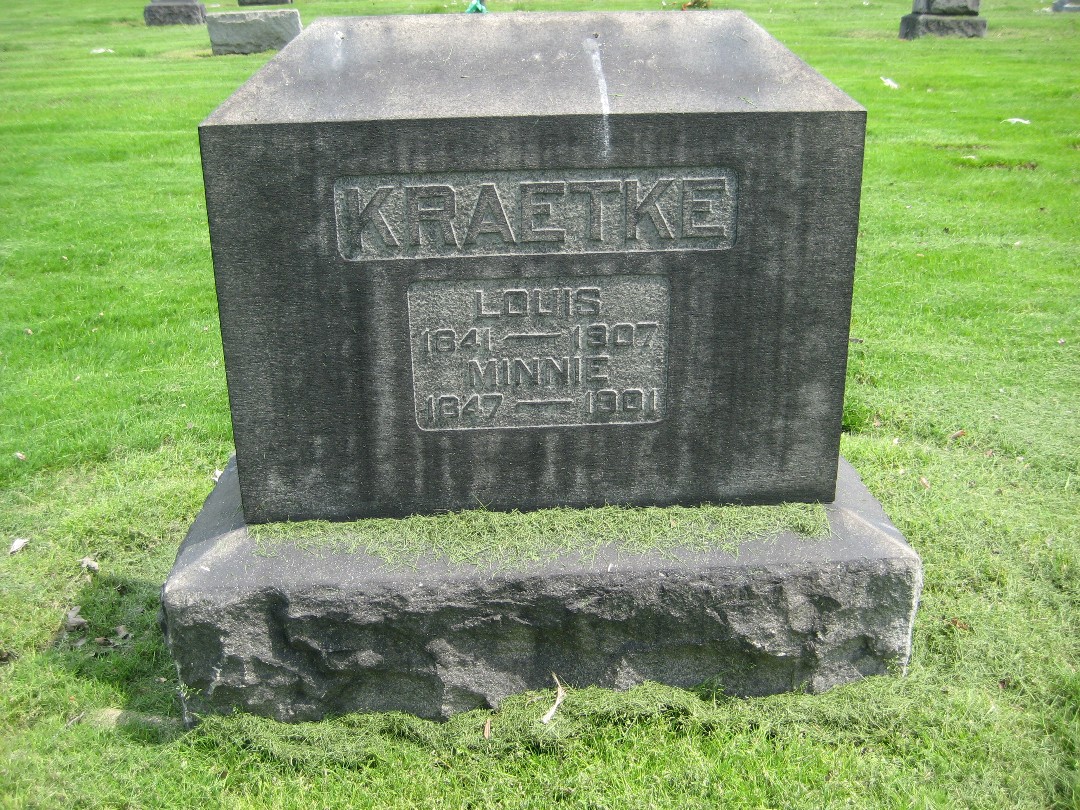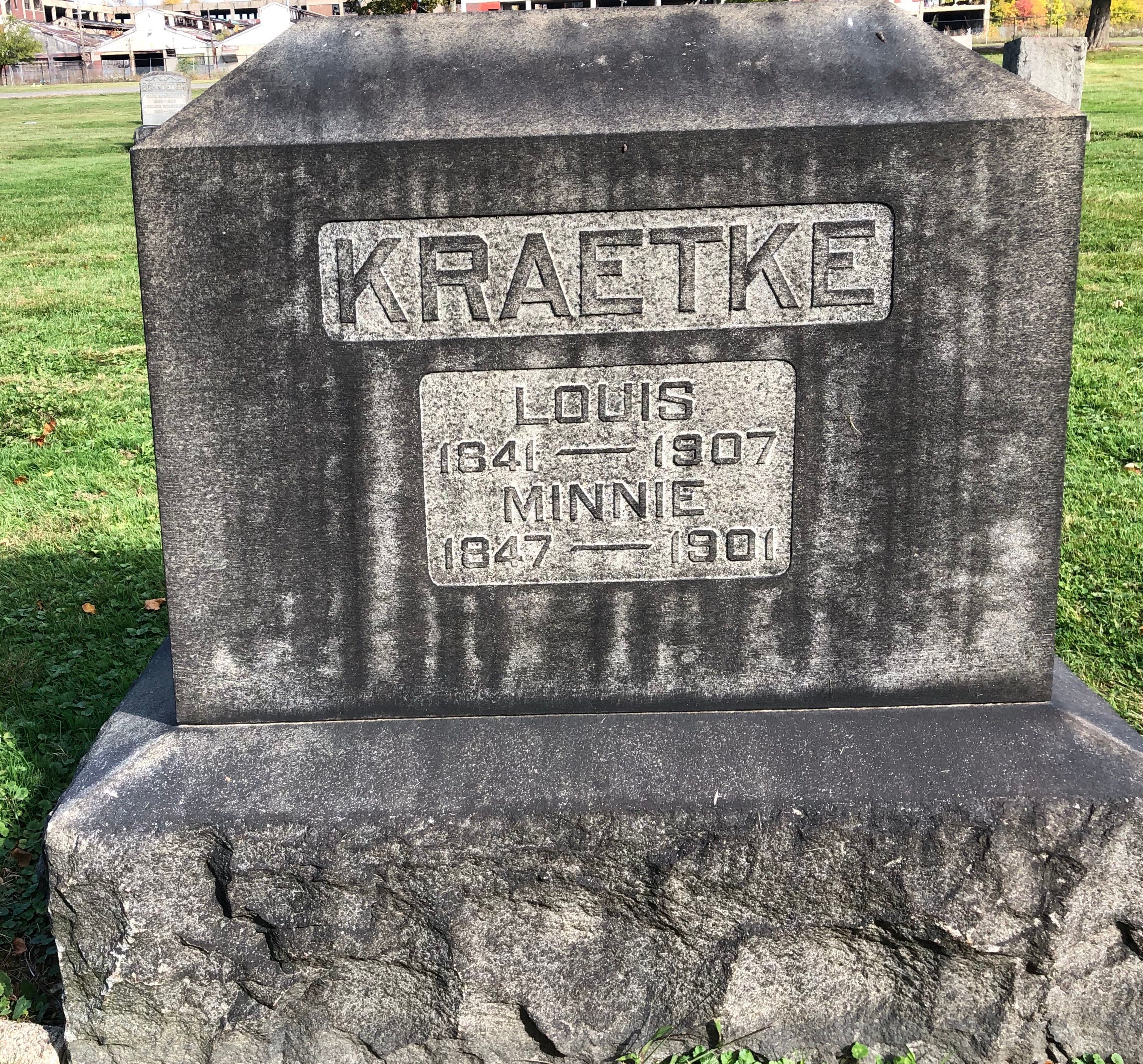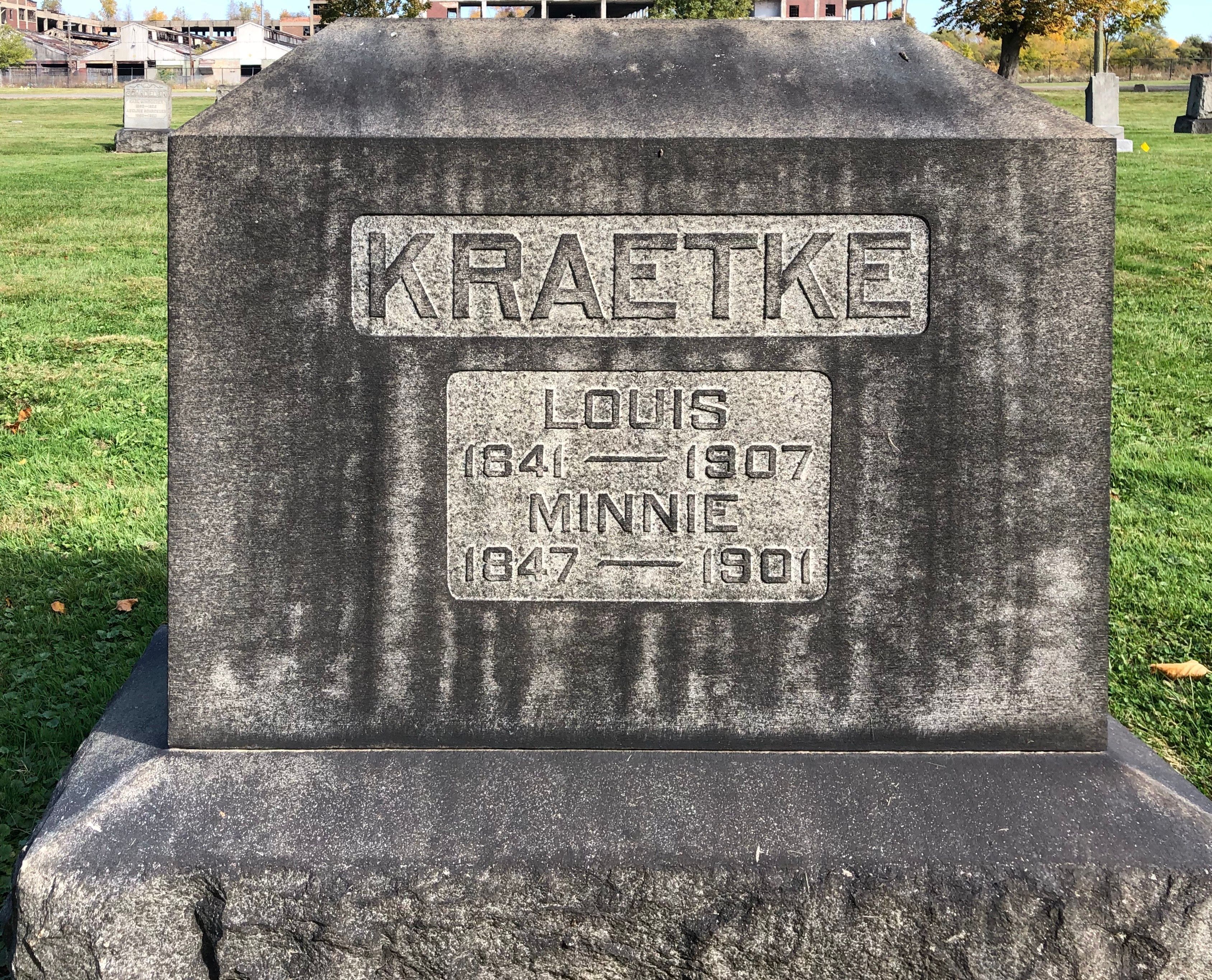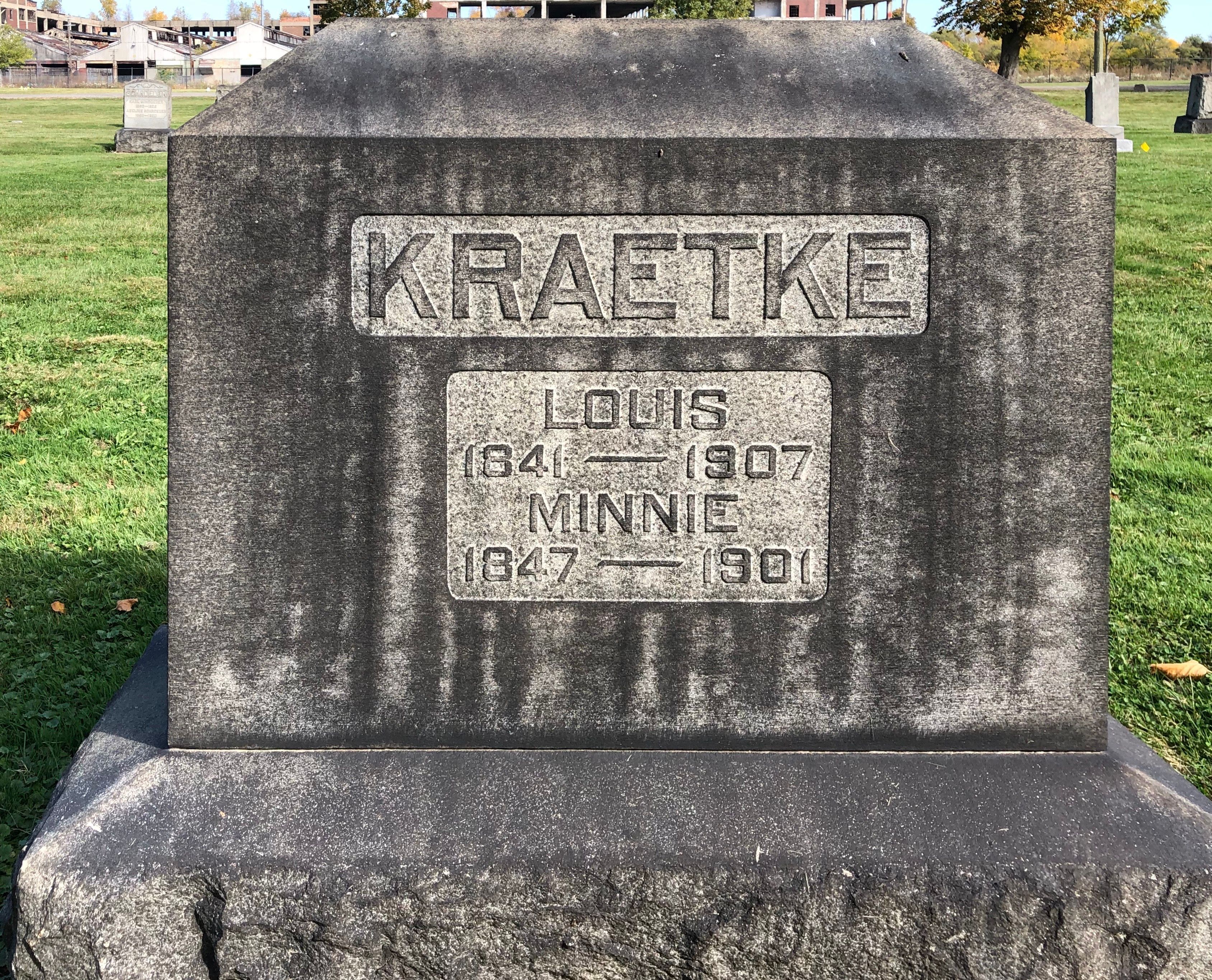"Certificate of Valor During Combat. With God For The King And Fatherland. From the command of His Majesty the King. With the highest commendation for the capture of cannons, a bronze etched commemorative cross of combat to the Uncommissioned Officer, Louis Anton Kraetke, Fuselighter Regiment No. 40, Stettin Stadt, Pommern, Preussen. In recognition of his participation of the campaign of the year 1866. Given from the undersigned on the 17, July 1866" (cannot decipher the signature)
"The Faithful Soldiers 1866."
In 1841, Louis, the son of Johann Friedrich Kraetke and Dorothee Elisabeth Wittman, was born in Bredow, Stettin, Pommern, Preussen. In 1842, his mother, Dorothee, gave birth to a son named Auguste Albertine Kraetke, Louis' only known sibling. No information found regarding Louis' life or family during his childhood years in Germany.
Louis' birthplace of Stettin, was a busy port city in Northwestern Germany, situated on the Odra River near the Baltic Sea. The site of Stettin was probably settled by Slavic tribes as early as the 10th century. A city later developed and during the early 13th century, Stettin became the residence of the Duke of Pomerania and was an important trade center, joining the Hanseatic League in 1251. In 1648, at the end of the Thirty Years' War, Stettin ceded to Sweden by the Peace of Westphalia and was given to Prussia in 1720, at the end of the Great Northern War. At the close of W.W.I., Stettin became the capital of the German Province of Pomerania, however, after being bombed extensively by the allies during W.W.II., the city was included in the German territory placed under the administration of Poland and was later renamed Szezecin.
Louis Anton married Wilhelmine Caroline Amalie Nageborn and they had six children, four of whom were born in Stettin. In 1882, Louis, Wilhelmine, and their four children, Helene, Richard, Elizabeth, and Ernest, immigrated to the United States. They traveled aboard the ship "Irthington" and arrived in New York on June 15, 1882. The family settled in Detroit, Michigan, where Wilhelmine gave birth to a son and daughter, William and El Frieda. Louis supported his wife and six children working as a moulder and machinist. Louis' three sons Richard, Ernest, and William, opened their own machine shop located on Jefferson Avenue in Detroit. The business, Kraetke Bros. Inc., remained in operation until 1948.
Louis appeared in the Detroit City directory for the year 1890-91. His occupation was listed as a molder at "Jaenichen and Nageborn". His wife, Wilhelmine Caroline Amalie Nageborn, had a brother named Edward Heinrich Wilhelm Nageborn, referred to as William. William was the co-owner of a machine shop with a man named Louis Jaenichen and the company was called "Jaenichen & Nageborn". For many years, Louis was well known in Detroit as an iron moulder associated with the Russell Wheel Foundry. Per the 1890 Detroit City Directory, Louis' son, Richard, also worked for the company as a machinist.
The 1900 Census states Louis owned his home on Mitchell Avenue in Detroit, free and clear. Living in the home were his wife Minna, sons Richard, Ernest, and William, and a daughter, Elfrieda. Louis was employed as a machinist and moulder, Richard was a machinist, Ernest a bookkeeper, and William and Elfrieda were students.
Per Louis Kraetke's death certificate, he died of complications from Uraemia and Nephritis. His son Ernest was the informant.
"Certificate of Valor During Combat. With God For The King And Fatherland. From the command of His Majesty the King. With the highest commendation for the capture of cannons, a bronze etched commemorative cross of combat to the Uncommissioned Officer, Louis Anton Kraetke, Fuselighter Regiment No. 40, Stettin Stadt, Pommern, Preussen. In recognition of his participation of the campaign of the year 1866. Given from the undersigned on the 17, July 1866" (cannot decipher the signature)
"The Faithful Soldiers 1866."
In 1841, Louis, the son of Johann Friedrich Kraetke and Dorothee Elisabeth Wittman, was born in Bredow, Stettin, Pommern, Preussen. In 1842, his mother, Dorothee, gave birth to a son named Auguste Albertine Kraetke, Louis' only known sibling. No information found regarding Louis' life or family during his childhood years in Germany.
Louis' birthplace of Stettin, was a busy port city in Northwestern Germany, situated on the Odra River near the Baltic Sea. The site of Stettin was probably settled by Slavic tribes as early as the 10th century. A city later developed and during the early 13th century, Stettin became the residence of the Duke of Pomerania and was an important trade center, joining the Hanseatic League in 1251. In 1648, at the end of the Thirty Years' War, Stettin ceded to Sweden by the Peace of Westphalia and was given to Prussia in 1720, at the end of the Great Northern War. At the close of W.W.I., Stettin became the capital of the German Province of Pomerania, however, after being bombed extensively by the allies during W.W.II., the city was included in the German territory placed under the administration of Poland and was later renamed Szezecin.
Louis Anton married Wilhelmine Caroline Amalie Nageborn and they had six children, four of whom were born in Stettin. In 1882, Louis, Wilhelmine, and their four children, Helene, Richard, Elizabeth, and Ernest, immigrated to the United States. They traveled aboard the ship "Irthington" and arrived in New York on June 15, 1882. The family settled in Detroit, Michigan, where Wilhelmine gave birth to a son and daughter, William and El Frieda. Louis supported his wife and six children working as a moulder and machinist. Louis' three sons Richard, Ernest, and William, opened their own machine shop located on Jefferson Avenue in Detroit. The business, Kraetke Bros. Inc., remained in operation until 1948.
Louis appeared in the Detroit City directory for the year 1890-91. His occupation was listed as a molder at "Jaenichen and Nageborn". His wife, Wilhelmine Caroline Amalie Nageborn, had a brother named Edward Heinrich Wilhelm Nageborn, referred to as William. William was the co-owner of a machine shop with a man named Louis Jaenichen and the company was called "Jaenichen & Nageborn". For many years, Louis was well known in Detroit as an iron moulder associated with the Russell Wheel Foundry. Per the 1890 Detroit City Directory, Louis' son, Richard, also worked for the company as a machinist.
The 1900 Census states Louis owned his home on Mitchell Avenue in Detroit, free and clear. Living in the home were his wife Minna, sons Richard, Ernest, and William, and a daughter, Elfrieda. Louis was employed as a machinist and moulder, Richard was a machinist, Ernest a bookkeeper, and William and Elfrieda were students.
Per Louis Kraetke's death certificate, he died of complications from Uraemia and Nephritis. His son Ernest was the informant.
